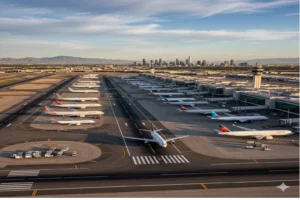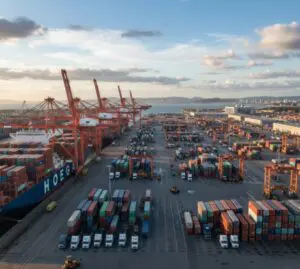From the 19th century to the 2010s, let's retrace the path that trucks have traced throughout U.S. history.
On National Retro Day, we take a look at the history of road transportation in the U.S., remembering the beginnings of trucks and following their technological progress and labor development over more than a century. From the 19th century to the 2010s, the evolution of trucks took a complete turn, marking key stages in the advancement of the sector.
Road transportation is a vital component of U.S. commerce, with a rich history deeply intertwined with the nation’s growth. The industry is responsible for supplying 70% of everything that reaches the market, making it important to remember its origins as a way to honor both the industry and the workers who made it possible.

Trucks Through the Decades
1890 to 1910: The First Trucks
The roots of road transportation trace back to the development of steam wagons in the late 19th century. However, the true origin of these vehicles took place in 1896, when inventor Gottlieb Daimler took a decisive step. He transformed a horse-drawn cart by equipping it with a two-cylinder, four-horsepower engine, designed from a modified touring engine, laying the foundation for the modern truck.
Years later, in 1900, brothers Jack and Gus Mack founded the company that would become Mack Trucks, one of the pioneering companies in the road transportation industry. In 1914, Otto Neumann and August Fruehauf developed the semi-trailer, and just one year later, in 1915, Hermann Farr and Martin Rocking introduced the fifth wheel, which allowed for a secure coupling between semi-trailers and trailers, revolutionizing road transport.

1920 to 1940: War Trucks
During the 1920s, there was a significant increase and progress in road transportation in the U.S., driven by the expansion of paved roads. This infrastructure improvement allowed trucks to become a more effective option than railroads for transporting goods.
Over the years, trucks took on a crucial role in U.S. history. During World War II, they were essential for transporting troops and supplies. The post-war economic boom propelled U.S. road transportation into the modern era.
In the following decades, the road transport industry experienced rapid growth due to advancements like the high-powered diesel engine, refrigerated containers, and the expansion of the road network. After the war, trucks became the primary method of transporting goods and products, surpassing trains for the first time since the construction of the Transcontinental Railroad in 1869.

1970 to 1990: The Golden Age of Trucks
In the 1970s, there was a boom in trucker culture, with truck drivers portrayed as modern-day rebels. This decade laid the groundwork for the contemporary era of road transportation, with an increase in competition and its essential role in the U.S. economy.
In 1980, the Motor Carrier Act partially deregulated the road transport sector, which increased the number of operating companies and de-unionized the workforce, leading to lower wages for drivers. However, deregulation boosted competition and productivity, benefiting consumers with lower prices. In the 1990s, government focus shifted more toward the environment and truck safety, while communications in the sector underwent a revolution.

2000 to 2010: Innovation and Power
During the 2000s, regulations on engine emissions tightened, led by the EPA, in an effort to mitigate the impact of diesel exhaust on public health. This resulted in significant changes in engine technology and emissions control.
The decade also saw an increase in the search for innovations to improve truck power, especially for heavy-duty vehicles, which saw a significant rise in popularity. In 2010, technologies for autonomous trucks began to be developed, along with improvements in diesel truck performance, laying the foundation for the industry we know today.


Ending CDL reciprocity: the U.S. seeks stricter measures
New bill would require states to comply with the strict CDL regulations recently established. The U.S. House of Representatives has introduced new legislation aimed at

Cargo theft costs the transportation industry $18 million in losses
Cargo theft has been one of the most persistent issues facing the freight transportation industry so far in 2025. Cargo theft has been one of

Duffy Secures $41 Million to Save Essential Air Service as Shutdown Threat Looms
U.S. Transportation Secretary Sean P. Duffy announced on Wednesday that the Department of Transportation (DOT) has secured $41 million in additional emergency funding to sustain the Essential Air Service (EAS) program, a federal initiative that subsidizes commercial flights to rural and underserved communities across the United States.

Expanding opportunities for young drivers: the DRIVE Safe Act
The House of Representatives has reintroduced a proposal aimed at facilitating access for young drivers under the age of 21 to operate trucks across state

25% tariffs on medium and heavy trucks postponed
The 25% tariffs on medium and heavy trucks have been rescheduled, set for November 1. The 25% tariffs on medium and heavy trucks have been

How a U.S. Government Shutdown Impacts Truckers, Freight Transport, and Jobs
Truckers keep driving. Producers keep working. Business owners keep paying taxes. But in Washington, the offices go quiet, bureaucrats argue, and millions of private-sector workers are left in uncertainty. That is the reality of a government shutdown — a clear sign of how big the federal apparatus has become. When it stops, it drags down those who truly keep the economy moving.
